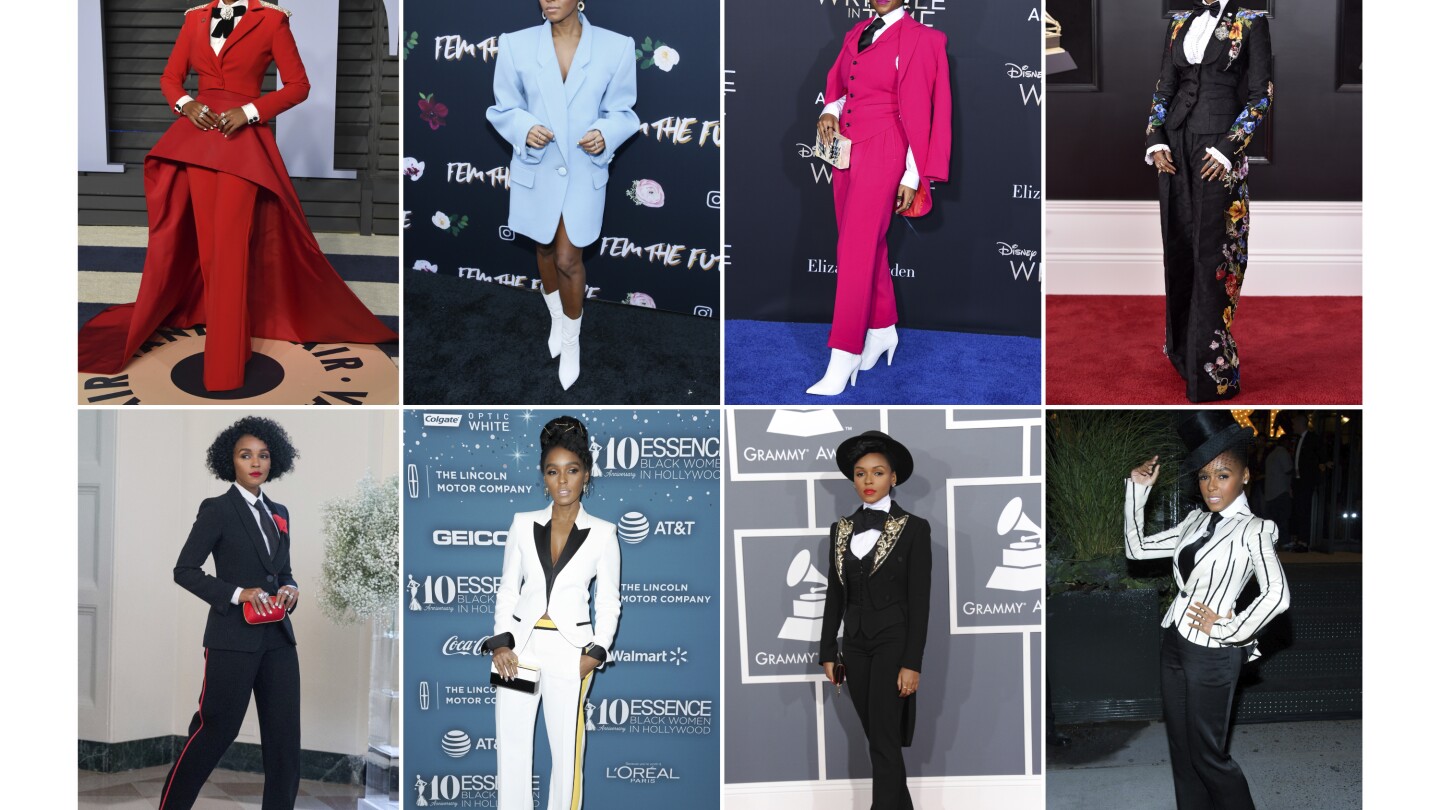Lifestyle
These papal tailors aren’t expecting a traditional order for new cassocks to outfit the next pope

ROME (AP) — Two papal tailors and no conclave orders.
The conclave that begins next Wednesday to elect a successor for Pope Francis is the first in 46 ½ years for which the Vatican hasn’t ordered a set of cassocks for the new head of the Catholic Church — at least from the two best-known papal tailors.
That isn’t stopping Ranieri Mancinelli, who opened his ecclesiastical tailoring shop near the Vatican in the 1960s, from making three simple white cassocks just in case: the traditional small, medium and large sizes to cover all possible heights and girths.
“I’m doing this on my own to be able to present these cassocks for the next pope, without knowing who he will be,” Mancinelli said.
Gammarelli, another family-run ecclesiastical tailor near the Pantheon in the historic center, has a paper trail showing it has received cassock orders for every conclave since the beginning of the 20th century — and probably far earlier. Gammarelli has been making garments for priests, bishops and cardinals since 1798.
The last time no pre-conclave order came in to the Vatican’s tailor of choice, Gammarelli, was October 1978, when cardinal electors voted a successor to Pope John Paul I, who died after 33 days as pontiff, said Lorenzo Gammarelli, representing the sixth generation of the family business.
Gammarelli won’t speculate why no order was made this year, but Italian media suggests the Vatican has enough unworn cassocks on hand, and is honoring Pope Francis’ message of environmental and economic sustainability.
“Obviously, we’re a little sorry, because in the sadness caused by the death of the Holy Father, we still would have the beautiful thing of having to make the trousseau for the new one. Not this time,” Gammarelli said.
The Vatican declined to comment on what is being viewed as the great papal cassock race. “I don’t think I need to speak on behalf of businesses,” said Vatican spokesman Matteo Bruni. “Not every curiosity needs to be answered.”
The papal trousseau
For a pope’s first encounter with the flock, the basic garment is the hand-stitched white wool cassock with white cape and wide silk sleeves. The cassock is fastened by silk buttons and worn with a silk brocade sash with gold fringe. All popes, until Francis, had this sash later embroidered with his papal seal.
Francis also eschewed the classic burgundy red mozzetta, a short elbow-length cape worn for formal occasions, and a gold embroidered stole, not only the night of his election but throughout his papacy.
The papal garb is finished with a white “zucchetto,” or skullcap that is also worn by cardinals in red and bishops in purple.
When they are called on to provide a conclave order, Gammarelli also provides shoes in an array of sizes so the new pope will be comfortable when presented to his flock. After that, Gammarelli said, “shoes are a very personal matter.”
In keeping with the secrecy of the conclave, Gammarelli never reveals papal prices.
Sizing up the next pope
While the world speculates on who will be the next pope, Gammarelli’s job is more practical. The family has a system to best outfit the unknown successor, using data from their cardinal clients and sizing up cardinal candidates who are not.
“We consider who, in our opinion, could be elected,” Gammarelli said. “We pull out their measurements, and … we make three cassocks that would more or less fit all of them.’’
Balcony mishaps
Their best guesses are sometimes off.
Gammarelli said they never imagined that Polish Cardinal Karol Wojtyla would become pope in October 1978. They had considered Argentine Cardinal Jorge Mario Bergoglio a candidate in 2005 (when Benedict XVI was elected) but not in 2013, when Bergoglio became the church’s first Latin American pope.
Back in 1958, the portly John XXIII appeared on the balcony of St. Peter’s Basilica with safety pins holding together the back of his cassock, after a too-small size was mistakenly grabbed, forcing aides to open the back.
Gammarelli said that throughout Francis’ 12-year papacy he tried to persuade the pope to wear white pants under his cassock. But Francis stuck with the black trousers of a priest, a reminder to himself and everyone that he was a pastor at heart.
Francis’ unadorned style
Mancinelli, at his shop just steps from the Vatican, has made cassocks for the last three popes: St. John Paul II, Pope Benedict XVI and Pope Francis.
He got to know Benedict when he was a cardinal, living near Mancinelli’s shop. Francis later invited him to his apartment in the Santa Marta residence, marking “the beginning of a very pleasant encounter period.”
While Gammarelli won’t make the cassocks on speculation, Mancinelli is making three to give to the Vatican, in Francis’ simple, unadorned style.
“Compared with the other two, Francis preferred much simpler and much more practical things,” he said, also taking costs into account.
Only after the words “Habemus Papam!” are announced from the balcony of St. Peter’s Basilica will it be clear whether the Catholic Church’s 267th pontiff will follow Francis’s unembellished example or will bring back traditional papal trappings, like flashes of red.
____
AP video journalist Silvia Stellacci contributed to this report.
Lifestyle
who will tailor the pope’s robes outfits

ROME, Italy (AP) —
As cardinals gather in Rome for the start next week of the conclave, where they will vote for the successor to Pope Francis, two longtime papal tailors are also pondering the transition.
There are no clear frontrunners for pontiffs — unsurprisingly, given the secretive nature of a process that is supposed to be more about inspiration from the Holy Spirit than politicking.
And the tailors said they haven’t received orders yet to make different-sized cassocks.
Raniero Mancinelli, who’s been working on papal vestments since the early 1960s, said he’s prepped three robes — sizes small, medium and large — to donate to the Vatican anyway.
He recalled that the very quality of the fabric depends on a pope’s preference.
“Francis preferred things that were much simpler and practical,” Mancinelli said inside his shop, just down the street from one of the Vatican’s main entrance gates. “Ratzinger (Pope Benedict XVI) liked slightly more choice fabrics.”
Lorenzo Gammarelli, the sixth-generation owner of an ecclesiastical tailor shop in downtown Rome, recalled the family lore that when John XXII was elected, the cassock was too small.
“So they had to intervene in the background, use pins to take it out so he could appear on the balcony,” Gammarelli said.
___
This is a photo gallery curated by AP photo editors.
Lifestyle
For Black men, fashion has been a tool of self-expression — and a way they’ve been judged

NEW YORK (AP) — Growing up on the south side of Chicago, the Rev. Dr. Howard-John Wesley was given the message early on: What one wore as a Black man mattered.
Wesley’s pastor father, who migrated from Louisiana after World War II in search of more opportunities than those readily available to Black people in the Deep South, “always had an impeccable sense of shirt and tie and suit.”
“In order to move in certain spaces where colored people were not allowed to be, you want to be dressed the right way to be able to fit in,” says Wesley, 53, now a senior pastor in Alexandria, Virginia.
But Wesley also got an early warning: What he wore could be used against him. His father forbade baseball caps because some street gang members wore them in certain ways, and his father was concerned authorities would make stereotypical or racist assumptions about his son if he were seen wearing one.
Clothing as message. Fashion and style as tools, signifiers of culture and identity, whether intentional or assumed. There’s likely no group for whom that’s been more true than Black men. It’s not just what they wear, but also how it’s been perceived by others seeing it on a Black man, sometimes at serious cost.
“It’s always a dialogue, between what you can put on and what you can’t take off,” says Jonathan Square, assistant professor at Parsons School of Design and among the advisers to a new exhibit at the Metropolitan Museum of Art’s Costume Institute that kicks off with Monday’s Met Gala.
Clothing matters, and not just at the Met Gala
“Superfine: Tailoring Black Style,” opening to the public May 10, focuses on Black designers and menswear. It uses the 2009 book, “Slaves to Fashion: Black Dandyism and the Styling of Black Diasporic Identity,” by guest curator and Barnard College professor Monica L. Miller, as a foundational inspiration for the show. The dress code for the celebrity-laden, fashion extravaganza fundraiser that is the Met Gala is “Tailored For You,” with high-profile Black male entertainers like Pharrell Williams, Lewis Hamilton, Colman Domingo and A$AP Rocky joining Vogue editor Anna Wintour as co-chairs.
“When we’re talking about Black men … we are talking about a group, an ethnic and racial group and cultural group that has historically dealt with adversity, oppression, systemic oppression,” says Kimberly Jenkins, fashion studies scholar and founder of the Fashion and Race Database, who contributed an essay for the exhibit’s catalog. “And so clothing matters for them in terms of social mobility, self-expression, agency.”
Through the decades, that self-expression has taken many forms and been adopted by others. Take the zoot suit, first popularized in the 1920s in urban centers like New York’s Harlem, with its wide-legged, high-waisted pants and long suit coats with padded shoulders. The 1980s and 1990s saw the rise of styles related to hip-hop culture, such as jeans worn sagging off the hips, oversized jerseys and jackets with designer logos. Hoodies, sneakers and other streetwear were popularized by Black men before becoming global fashion staples.
For some, it was about always being dressed “appropriately” or “respectably” to demonstrate to the mainstream that Black men were in fact equal, not lesser beings, criminals or thugs. The Met exhibit, for example, includes material from civil rights activist W.E.B. Du Bois that showcases how seriously he took the tailoring of his clothes. Gala co-host A$AP Rocky made a point of tailored suits and high fashion earlier this year during his trial on firearms charges for which he was ultimately found not guilty — Yves Saint Laurent even sent out a press release touting his court attire.
Others purposely picked their clothing as a pushback and challenge to white standards of what was acceptable, like the Black Panthers’ berets and black leather jackets, or colorful dashikis that signaled connection to Pan-Africanism.
But it has never been a one-way message. Debates over the clothes Black men wear and how they wear them have at times turned into a form of cultural and literal policing, like when a young Black man sued a New York department store in 2013, saying he was racially profiled and detained by police after buying an expensive belt.
The weaponization of fashion
Elka Stevens, associate professor and fashion design program coordinator at Howard University, describes a gatekeeping weaponization of fashion, where some believe “people don’t have the right to wear the finest designer clothes based upon their skin color, or how they look, or how they’re being classified.”
“But if you don’t dress at a particular standard, or you don’t dress what’s considered to be appropriate for said venue or occasion, that gets weaponized as well,” she adds.
Zoot suits were condemned in the WWII era as unpatriotic for how much fabric they required during wartime scarcity. When Allen Iverson and other athletes started bringing hip-hop style and sensibility to the NBA, the league pushed back in 2005 with a dress code calling for business attire for players on the sidelines to promote what it considered a “professional” image.
And even as streetwear styles and sneakers have become big business for global fashion, they can still be looked down upon based on the body wearing them, says Stevens.
“That which was previously associated with street culture and particularly Black street culture, now is part of our everyday,” she says. “But again, who’s wearing it makes a huge difference.”
There’s perhaps no starker example than that of Trayvon Martin, the 17-year-old killed in Florida in 2012. He was shot by a man who found the sight of the hoodie-wearing Black teen suspicious, leading to the confrontation in which Martin died.
Even as hoodies have become essential dressing for everyone from kids to corporate CEOs, it’s “the presence of that person who we’ve identified as being Black or someone identifies as being Black that causes the problem no matter what, no matter what they have on,” Stevens says.
It’s a reality of life in the United States that Wesley has wrestled with. After Martin’s death, he wore a hoodie while behind the pulpit at Alfred Street Baptist Church and spoke of his worries about how his own young sons would be perceived.
Like his father before him and for the same reasons, there were certain styles he never allowed his sons — now 21 and 18 — to wear. Sagging jeans? He “just won’t allow it. I refuse to. Not only because of fear of being stereotyped by the police, but also labeled by society. Maybe I’m wrong for that. I don’t know,” Wesley says.
“To me, it’s a shame that my attire can neither hide my color, it can never elevate me above it in your stereotype, but it can always confirm it,” Wesley says. “So my suit doesn’t get me out of, ‘Oh, he’s still a Black man who’s a threat,’ but the hoodie makes it go, ‘Oh, he’s a Black man who’s the threat.’”
___
For more coverage of the 2025 Met Gala, visit: https://apnews.com/hub/met-gala
Lifestyle
What is dandyism, the Black fashion style powering the 2025 Met Gala?

NEW YORK (AP) — Fashion icons like Dapper Dan, Janelle Monáe and the late André Leon Talley are known for their distinctive approaches to sartorial style — bold splashes of color, luxurious fabrics, playful construction, capes — but fashion savants and historians agree that a common thread weaves their tailored looks together: dandyism.
The history-laden style movement will be front and center as part of the Metropolitan Museum of Art’s Costume Institute spring exhibit, “Superfine: Tailoring Black Style,” kicking off with the biggest night in fashion, Monday’s Met Gala.
Inspired by Monica Miller’s book “Slaves to Fashion: Black Dandyism and the Styling of Black Diasporic Identity,” the exhibit focuses on Black style and specifically menswear from the 18th century to present day, with dandyism as a unifying theme.
What is dandyism?
Once used to describe the aristocratic style and leisurely pursuits of figures like Regency England’s Beau Brummell, dandyism has been recontextualized over the years to embody liberation and resistance through exuberant self-expression.
This evolution of the term began with the trans-Atlantic slave trade. Miller, guest curator of the Met exhibit, writes how, in the 18th century, young, dandified Black servants in England were forced to wear gold, brass or silver collars with padlocks and fine livery — uniforms for slaves and servants — that signaled their owners’ wealth.
“They wanted the enslaved person to stand out almost as if they were a luxury item,” said Jonathan Square, Parsons School of Design assistant professor and one of the advisers on the Met exhibit.
Slaves arrived in America with few or no belongings. What they had left, they treasured, be it beads or small precious objects, Miller writes.
“This is as true for those who were deliberately dressed in silks and turbans, whose challenge was to inhabit the clothing in their own way, as for those who were more humbly attired, who used clothing as a process of remembrance and mode of distinction (and symbolic and sometimes actual escape from bondage) in their new environment,” Miller explains in her book.
Stripped of their identities, enslaved people often added their own flair to their tailored Sunday best looks for church or on holidays.
Post-Emancipation, Black Americans had the chance to reclaim their autonomy and carve out new lives for themselves, paving the way for the Harlem Renaissance.
Dandyism enters a new era with the Harlem Renaissance
Black Americans fled the South for cities like Chicago, Los Angeles and New York in a period dubbed the Great Migration. From the 1920s to the 1930s, New York’s Harlem neighborhood became an influential and fertile landscape for Black cultural expression. From Langston Hughes and Zora Neale Hurston to Duke Ellington and Louis Armstrong, its prominent minds reshaped the fabric of American culture and challenged prejudiced beliefs.
The Harlem Renaissance gave fashion a soul, said Brandice Daniel, founder of Harlem’s Fashion Row, an agency that connects designers of color with retailers and brand opportunities.
“It was this birthplace of this visual identity that spoke to what we now call Black excellence,” she said.
The renaissance meant living and dressing boldly for Black Americans, pushing past societal confines and making themselves visible. Adding their own twist on mainstream looks, women donned furs and beaded dresses while men experimented with tailored fabrics, pristine fedora hats, two-toned oxfords and billowing silhouettes.
“Many of us have a photo of our grandfather decked out with the suiting, but it’s also the stance and the kind of posture and the assertion of presence,” said Tara Donaldson, co-author of “Black In Fashion: 100 Years Of Style, Influence, and Culture.”
W.E.B. Du Bois, a pivotal figure of the era who often appeared in a three-piece suit, a frock coat and top hat, understood the power of self-fashioning, said Valerie Steele, director of The Museum at the Fashion Institute of Technology. At the 1900 Paris Exposition, Du Bois mounted a photographic exhibit centered on showcasing Black Americans’ economic, social and cultural contributions to combat stereotypes.
“That kind of self-fashioning is very much a way of reclaiming a sense of self-respect that had been denied by a society that aggressively was saying, ‘No, no you can’t have that,’” Steele said.
A key, enduring look: the zoot suit
One style that arose out of the Harlem Renaissance, directly linked to dandyism, was the zoot suit. The suit, defined by high-waisted draped pants and oversized jackets with exaggerated shoulders and large lapels, was subversive simply by taking up space. Because of fabric rations during World War II, owning a zoot suit, with its excessive use of fabric, was an act of protest, Square said.
“It’s meant to be a provocation,” Square said. “But also, it’s a form of protection, covering a part of your body, sort of saying, ‘You don’t have access to this.’”
The style was quickly adopted by Mexican American and Filipino American men in Los Angeles. In 1943, servicemen and police officers attacked Black, Mexican and Filipino men in what was labeled the Zoot Suit Riots. The zoot suit lives on today in the gender-fluid designs of Willy Chavarria.
Dandyism
transcends gender
Dandyism was not limited to men. Following World War I, women began breaking down fashion’s gender norms. With her tuxedo and top hat, blues singer and entertainer Gladys Bentley epitomized how women in the Harlem Renaissance blurred gender lines and adopted more masculine styles of dress.
Singer and actor Monáe, who sits on this year’s Met Gala’s host committee, is not shy about standing out on a red carpet in her tailored, playful looks. Monáe’s distinct style and flourishes with oversized hats, whimsically tailored suits and ornate bow ties personify the dandy style.
As Monáe and the rest of the starry guest list arrive in their glamorous “Tailored for You” looks, Monday will be a night to remember all the dandies who styled out before.
“Black people, Black men are finally getting their flowers for being true style icons,” said designer Ev Bravado, co-founder of Who Decides War. “It is amazing to see the ancestral work being put on display.”
-

 Africa2 days ago
Africa2 days agoResearchers study using planes to cool the earth amidst global warming
-

 Asia1 day ago
Asia1 day agoFall of Saigon: US officers who broke rank to save lives recall final days of Vietnam War 50 years on
-

 Africa2 days ago
Africa2 days agoBomb Blast Kills 26 in Northeast Nigeria
-

 Europe1 day ago
Europe1 day ago16-year-old suspect detained after 3 killed in shooting in Sweden
-

 Conflict Zones1 day ago
Conflict Zones1 day agoAbout 600 North Korean soldiers killed in war in Ukraine, lawmakers say | Russia-Ukraine war News
-

 Africa1 day ago
Africa1 day agoThousands displaced by Sudan war return home from Egypt
-

 Lifestyle1 day ago
Lifestyle1 day agoAfter a year of turmoil, The Washington Post is taking note of its journalism again
-

 Europe1 day ago
Europe1 day agoSanaa, Yemen: UK launches strikes against Houthis, in first joint US operation under Trump




